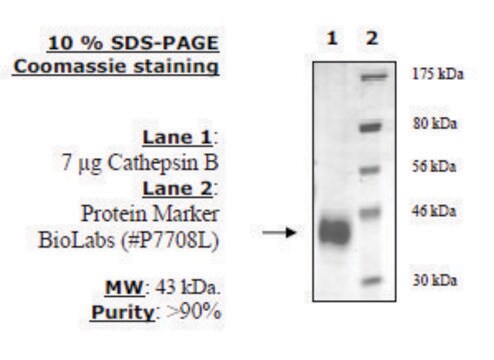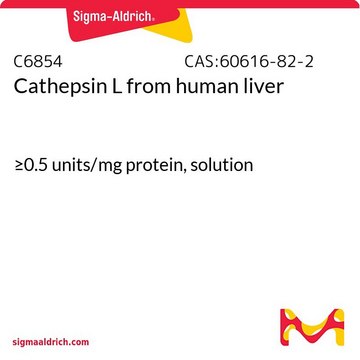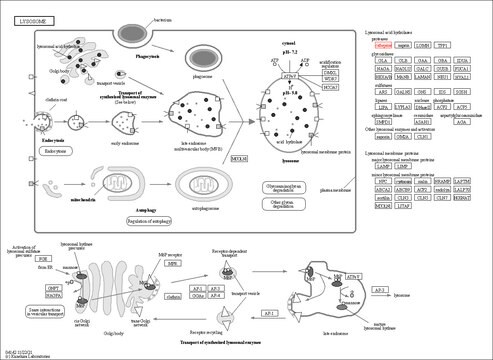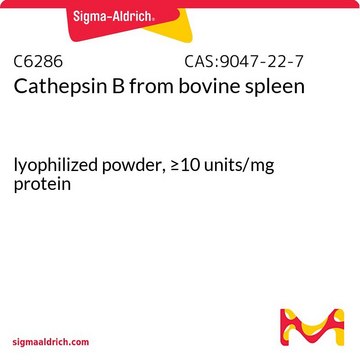SRP0292
Cathepsin S Active human
recombinant, expressed in FreeStyle™ 293-F cells, ≥90% (SDS-PAGE)
Sinônimo(s):
CTSS, MGC3886
About This Item
Produtos recomendados
fonte biológica
human
recombinante
expressed in FreeStyle™ 293-F cells
Ensaio
≥90% (SDS-PAGE)
Formulário
aqueous solution
atividade específica
≥8100 pmol/min-μg
peso molecular
37 kDa
técnica(s)
activity assay: suitable
adequação
suitable for molecular biology
nº de adesão NCBI
aplicação(ões)
life science and biopharma
Condições de expedição
dry ice
temperatura de armazenamento
−70°C
Informações sobre genes
human ... CTSS(1520)
Descrição geral
Human cathepsin S (GenBank Accession No. NM_004079.3), CD33 signal peptide (amino acids 1-16) + cathepsin S (amino acids 17-331), with C-terminal HIS tag, MW = 37 kDa, expressed in FreeStyle 293-F cells. Cathepsin S belongs to the cysteine cathepsin protease family. It has limited tissue expression, being associated with antigen-presenting cells localized in lymph and spleen, as well as other immune cells like macrophages. Human cathepsin S is produced from its corresponding CTSS gene on chromosome 1q21 and is synthesized as a pre-proenzyme.
Aplicação
- to assess the pathogenesis of Alzheimer′s disease.
- to investigate the optimization of selectivity of Azepanone-based inhibitors.
- for the immunocytochemical detection of cathepsin-S in mouse samples.
- for incubating mouse brain sections to test the impact of cathepsin-S on perineuronal nets (PNNs) integrity.
Ações bioquímicas/fisiológicas
Definição da unidade
forma física
Nota de preparo
Informações legais
Palavra indicadora
Danger
Frases de perigo
Declarações de precaução
Classificações de perigo
Eye Irrit. 2 - Repr. 1B - Skin Irrit. 2
Código de classe de armazenamento
6.1C - Combustible acute toxic Cat.3 / toxic compounds or compounds which causing chronic effects
Classe de risco de água (WGK)
WGK 3
Ponto de fulgor (°F)
Not applicable
Ponto de fulgor (°C)
Not applicable
Escolha uma das versões mais recentes:
Certificados de análise (COA)
Não está vendo a versão correta?
Se precisar de uma versão específica, você pode procurar um certificado específico pelo número do lote ou da remessa.
Já possui este produto?
Encontre a documentação dos produtos que você adquiriu recentemente na biblioteca de documentos.
Nossa equipe de cientistas tem experiência em todas as áreas de pesquisa, incluindo Life Sciences, ciência de materiais, síntese química, cromatografia, química analítica e muitas outras.
Entre em contato com a assistência técnica










